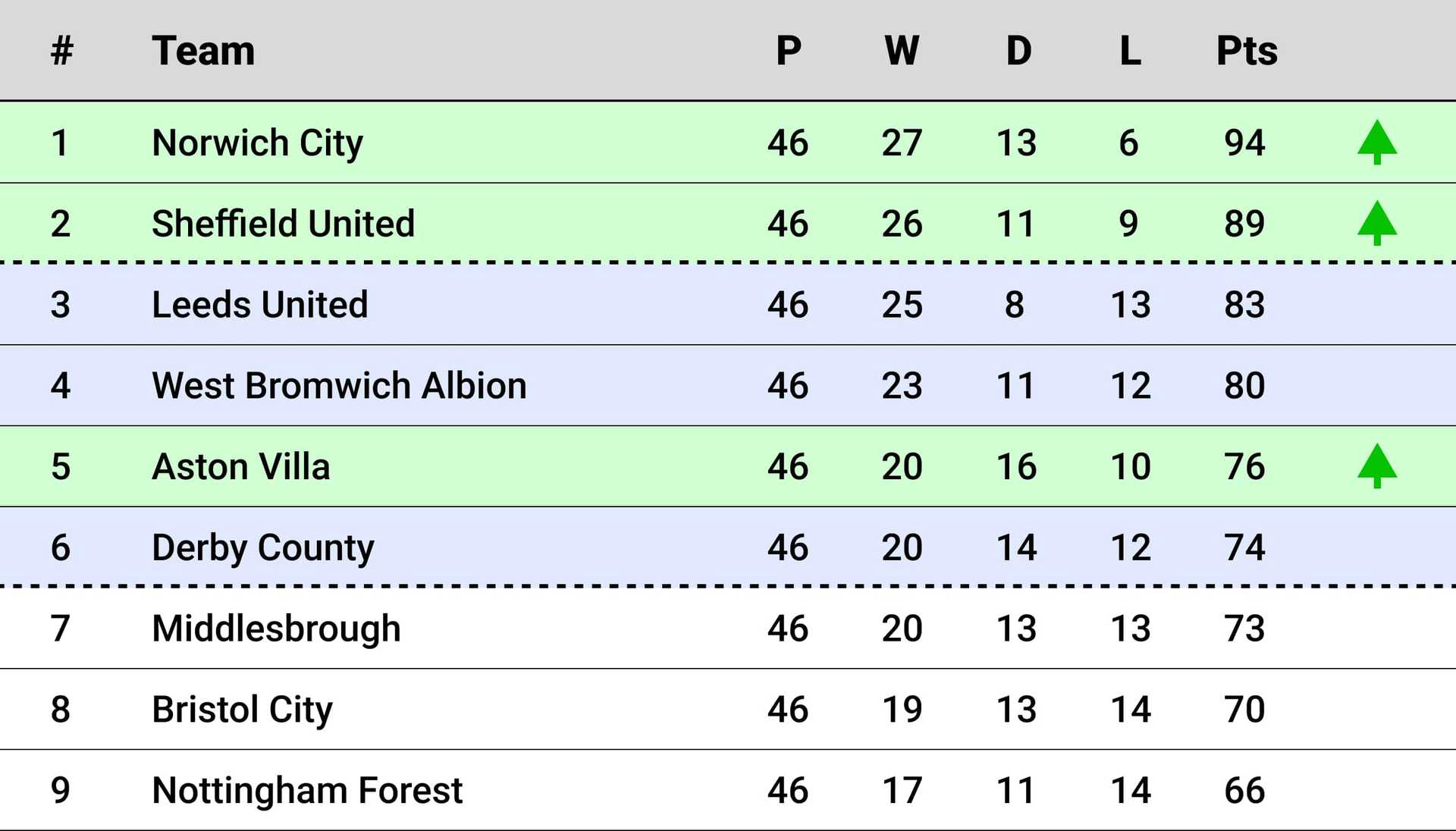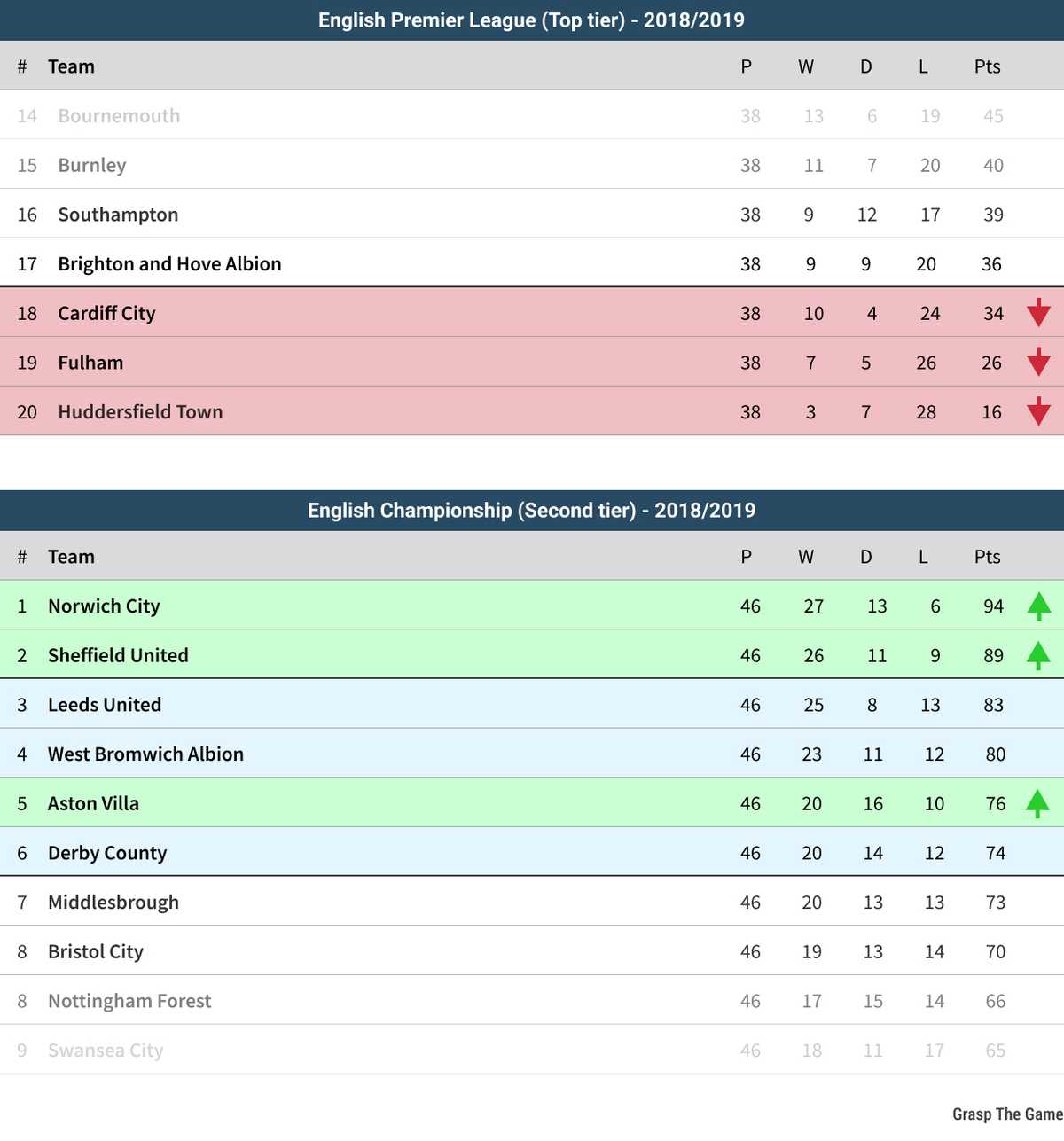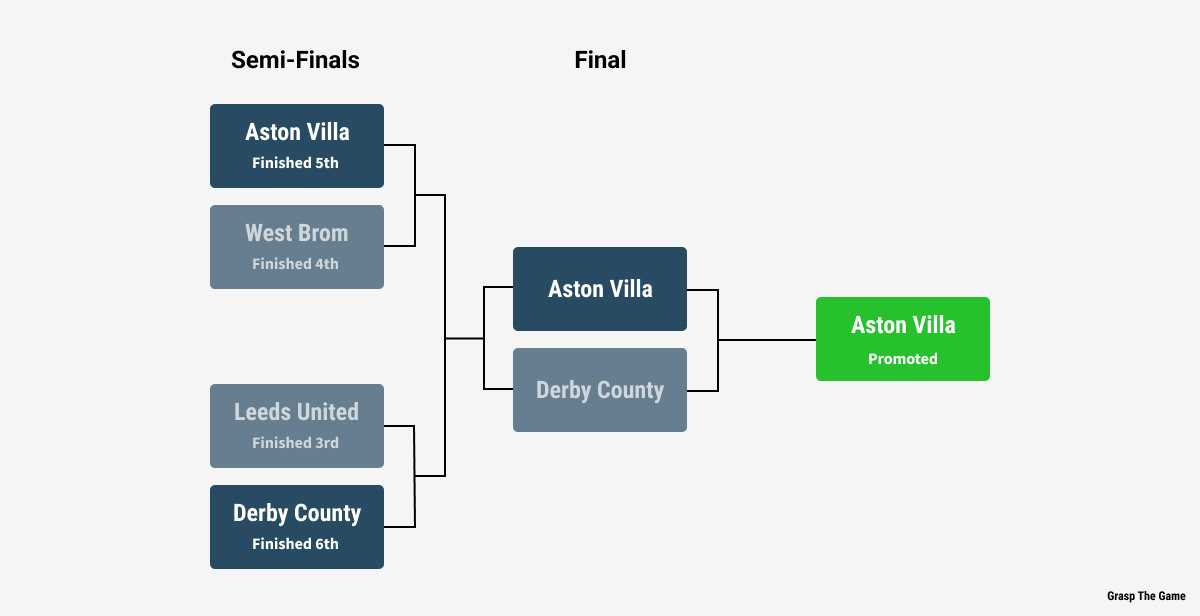Promotion and Relegation in Soccer

Relegation and promotion are the terms used to describe the movement of teams between divisions (or tiers) based on their performance during the season. If a team performs poorly and finishes the season in the pre-defined positions at the bottom of the league, then they will be relegated to the division below. Conversely, if a team performs well and finishes in pre-defined positions at the top of the league, then they will be promoted to the division above.
A league organizational system that uses promotion and relegation can be classed as an open league, as opposed to the closed league model which is primarily used in the United States, whereby the teams are fixed and there is no movement between the major leagues and the minor leagues.
Understanding the concept of relegation and promotion is important for soccer fans, players, and teams because it can have significant financial and competitive implications. Being relegated to a lower division can lead to a loss of revenue and sponsorship deals while being promoted to a higher division can bring new opportunities and increased exposure. Relegation and promotion can also have an impact on team morale and player motivation, as well as the overall competitiveness and excitement of soccer leagues.
Relegation and promotion rules
The specific rules that define relegation and promotion will vary from one league to another, but some general principles usually apply. Each country will have a hierarchical pyramid of interconnected leagues, ranging from the top-tier national leagues, all the way down to local amateur leagues. Promotion and relegation will be possible between each tier, so in theory, given enough time and money, an amateur team from the bottom tier can rise to the very top of the pyramid.
The standings of the teams in each league are determined using a points system, in which teams are awarded points for wins, and draws, and the teams with the highest or lowest points totals at the end of the season are eligible for relegation or promotion.
How many teams will be promoted or relegated?
The number of teams that can be promoted/relegated will vary between every league, however, the number must be equal between adjacent tiers. For example, if 3 teams will be relegated from the top tier, then 3 teams must be promoted from the tier below to keep the total number of teams in each tier consistent.
What are the criteria for promotion and relegation?
In some leagues, there may also be differences in how promotion and relegation are awarded. Some leagues will award automatic promotion/relegation to those teams in the defined positions, whilst other leagues may implement a playoff competition to determine which teams are promoted/relegated. These competitions can take various forms, such as a single-elimination tournament between the teams that finish at the top of the standings, or a series of matches between teams from different divisions.
For example, in the English Championship (2nd tier), the teams that finish first and second are automatically promoted to the Premier League (top tier). The teams that finish the season in 3rd to 6th place enter a playoff knockout tournament, with the winner taking the final promotion place.


Alternative methods
Another method of deciding which teams are promoted or relegated can be found in the top tier of German soccer. In this league, the bottom two teams are automatically relegated to the 2nd tier, but the team that finishes third from the bottom is entered into a playoff game with the third-placed team from the 2nd tier. If they win, they retain their league status. If they lose, they switch places with the lower-league side.
Not all leagues will award promotion purely on the performance of the current season. For example, in the Argentinian Primera Division, a system named Promedios is used. In this system, relegation is based on a longer-term average. At the end of each season, the two teams with the worst average performance over the last three years will be relegated. This method will spare any teams that suffer from a one-off bad season.
Additional requirements for promotion
In some scenarios, finishing the season with enough points to be positioned in the promotion spots may not be enough to move up to the next tier. For a club to be accepted into the higher league, it must satisfy a number of requirements regarding its stadium facilities and financial situation.
For example, in English soccer, for a club to be promoted from the National League into League Two, the club must have a stadium with a certified capacity of at least 4,000 (with the ability to be increased to 5,000) which shall include at least 500 seats (with the ability to be increased to 1,000).
These requirements are mostly due to health and safety concerns for the visiting fans. However, for some smaller clubs, the requirements may be impossible to achieve. In these circumstances, the team that finished below them may be offered the chance of promotion, or a team from the tier above may be saved from relegation.
Advantages of promotion and relegation
Parity (in theory)
One of the main advantages of a promotion/relegation format is that it promotes parity amongst teams, and maintains a competitive balance. Swapping out the best and worst performers each season ensures that each team in the league should be evenly matched for the upcoming season. It also keeps the league fresh, by introducing new teams means that we are not seeing the same fixtures year after year.
All games are important
Another advantage is that there will be very few 'meaningless' games toward the end of the season. In a system without relegation, the teams near the bottom of the league in the closing stages have no incentive to win games, as they have no possibility of reaching a playoff position, nor any danger of losing their league status if they finish last. The threat of relegation can result in a battle at the bottom of the league that is equally as exciting for the fans as that at the top of the league.
Smaller teams can rise to the top
A promotion and relegation system allows smaller teams to have a chance to compete at the highest level. Without relegation and promotion, the top-tier league in each country would likely be dominated by a small number of wealthy and successful teams, leaving little room for other clubs to break through. By allowing teams to earn promotions based on their performance, the current system creates a pathway for smaller clubs to rise up and compete against the best.
In 2020, Hollywood superstars Ryan Reynolds and American actor Rob McElhenney became owners of Wrexham Football Club, who have been competing in the 5th tier of English soccer since 2008. Many may question why they chose to purchase a club that plays in such a low division, but the answer is that there is such huge potential for the club to gain promotions and climb the pyramid.
Disadvantages of promotion and relegation
Financial losses
The system of relegation and promotion also comes with a few drawbacks. One of the main disadvantages is that it can create instability and uncertainty for teams and players. Suffering relegation can lead to major financial losses, player departures, and a decline in morale. It is very common for relegated teams to sell their best players to make up for the financial losses, and also because the players do not want to compete at a lower level. This can make it extremely difficult for teams to rebuild and recover.
Lack of parity
Another disadvantage of the current system is that it can lead to a lack of parity between different leagues. In theory, the system should result in a balance in quality in each league, however, due to the large variations in financial rewards between each tier, those teams that manage to stay in the higher divisions for longer periods become much stronger financially, making it very hard for the promoted teams to compete. This can lead to mismatched and one-sided matches, and often results in promoted teams being immediately relegated the following season.
The history of relegation and promotion in soccer
The concept of relegation and promotion has a long history in soccer, dating back to the 19th century and the early days of professional leagues. In 1888/1889, two league systems existed in England. The Football League and the Football Alliance. When the two leagues merged in 1892, the Football League was considered superior in quality, so the majority of the Football Alliance teams were placed into the new Football League Second Division. It was from here that the concept of promotion and relegation between the two leagues began. A second merger occurred in 1920 when the Southern League joined and formed the Third Division. As the sport grew in popularity and professionalism, leagues began to expand and reorganize, leading to the introduction of national top-tier leagues and lower divisions.
Relegation as punishment
Relegation is sometimes used as a disciplinary measure to punish teams for various wrongdoings. This has happened on a number of occasions in Italian soccer, to punish teams accused of match-fixing. The most notable example is Juventus, who were relegated in 2006.
Leagues without promotion and relegation
The following major leagues are considered closed leagues, and currently do not move teams between leagues.
- Australian A-League
- Canadian Premier League
- Indian Super League
- Mexican Liga MX
- US MLS
Big teams that have been relegated
There are many examples of teams that were once enjoying life in the big leagues but suffered massive falls to the lower leagues. The English lower leagues in particular are still home to many former giants including Portsmouth, Sheffield Wednesday, Coventry, Ipswich, and Preston North End.
There are a few formally huge clubs that deserve specific mentions.
Nottingham Forest
In 1977, Nottingham Forest won the First division in English soccer. In the following two seasons, they won back-to-back European cups, which is an incredibly rare feat. In 2005 they became the first-ever European Cup winners to be relegated down to the third tier.
Notts County Football Club
Notts County Football Club is the oldest professional soccer club in the world and has spent 30 seasons in the top tier. The club has been promoted 13 times, and has been relegated 17 times. In 2019 the club was relegated down to the 5th tier for the first time in its long history.
Deportivo de La Coruña
Deportivo de La Coruña has spent 46 years of its history in the Spanish top tier and even won the league in the 1999/2000 season. In the following 5 seasons, the club made successive appearances in the Champions League, reaching the semi-final in 2003/2004. In 2020 the club found itself relegated to the third tier of the Spanish pyramid.
Karlsruher FV
Karlsruher FV is the oldest existing soccer club in southern Germany. The club are 8 times winners of the Southern German Championship between 1901 and 1912, and also won the German Championship in 1910. The club now play in the Kreisklasse B, but were once playing in the Kreisklasse C, which is the 10th tier of German soccer.
Teams that have never been relegated
| Team | Country | Inauguration Year | Duration (years) |
|---|---|---|---|
| Celtic | Scotland | 1890 | 132 |
| Peñarol | Uruguay | 1900 | 122 |
| Nacional | Uruguay | 1901 | 121 |
| Aberdeen | Scotland | 1905 | 117 |
| Inter Milan | Italy | 1909 | 113 |
| Flamengo | Brazil | 1912 | 110 |
| Boca Juniors | Argentina | 1913 | 109 |
| Santos | Brazil | 1916 | 106 |
| Ajax | Netherlands | 1917 | 105 |
| Arsenal | England | 1919 | 103 |
| Feyenoord | Netherlands | 1921 | 101 |
| PSV Eindhoven | Netherlands | 1926 | 96 |
| Athletic Bilbao | Spain | 1929 | 93 |
| Barcelona | Spain | 1929 | 93 |
| Real Madrid | Spain | 1929 | 93 |
| Sao Paulo | Brazil | 1930 | 92 |
| Benfica | Portugal | 1934 | 88 |
| Porto | Portugal | 1934 | 88 |
| Sporting CP | Portugal | 1934 | 88 |
Importance of good club ownership
The quality of management by the club's owners cannot be underestimated when discussing promotions and relegations. A club's performance is usually determined by the quality of its players, so owners have the opportunity to spend their money in the transfer market to buy the best players available in an attempt to gain promotion. However, poor financial management can have disastrous consequences. If too much money is spent, and the club does not gain promotion, then the club will be burdened with player wages that they cannot afford and players with low morale as they were promised a higher level of soccer.
A similar gamble must be made if a club does manage to gain promotion. The club will receive a large financial bonus from the promotion, and the owners must decide if they want to gamble the money to strengthen the squad in an attempt to stay in the division or to play it safe with the finances, and risk an immediate relegation the following season.
FAQs
What is a yo-yo club?
Named after the popular toy, a yo-yo club is one that is constantly gaining successive promotions and relegations, therefore moving up and down the leagues, much like a yo-yo. Grimsby Town are the perfect example of a yo-yo club, as they have switched divisions a total of 32 times.
Which clubs have had the most promotions and relegations?
Grimsby Town have switched divisions the most times in English soccer. They have been promoted and relegated a total of 32 times.
How many teams get promoted in soccer?
The number of teams that will be promoted varies in each division, but is usually between 1 and 4.
How much does a team get for promotion to the Premier League?
It is estimated that a team can earn over $200 million for the next 3 seasons after being promoted to the Premier League. If the team avoids immediate relegation, this value can rise to $300 million.